Functionally Graded Materials and Structures: Unified Approach by Optimal Design, Metal Additive Manufacturing, and Image-Based Characterization
Abstract
:1. Introduction
2. Material Compositions
2.1. Metal–Metal Binary Systems
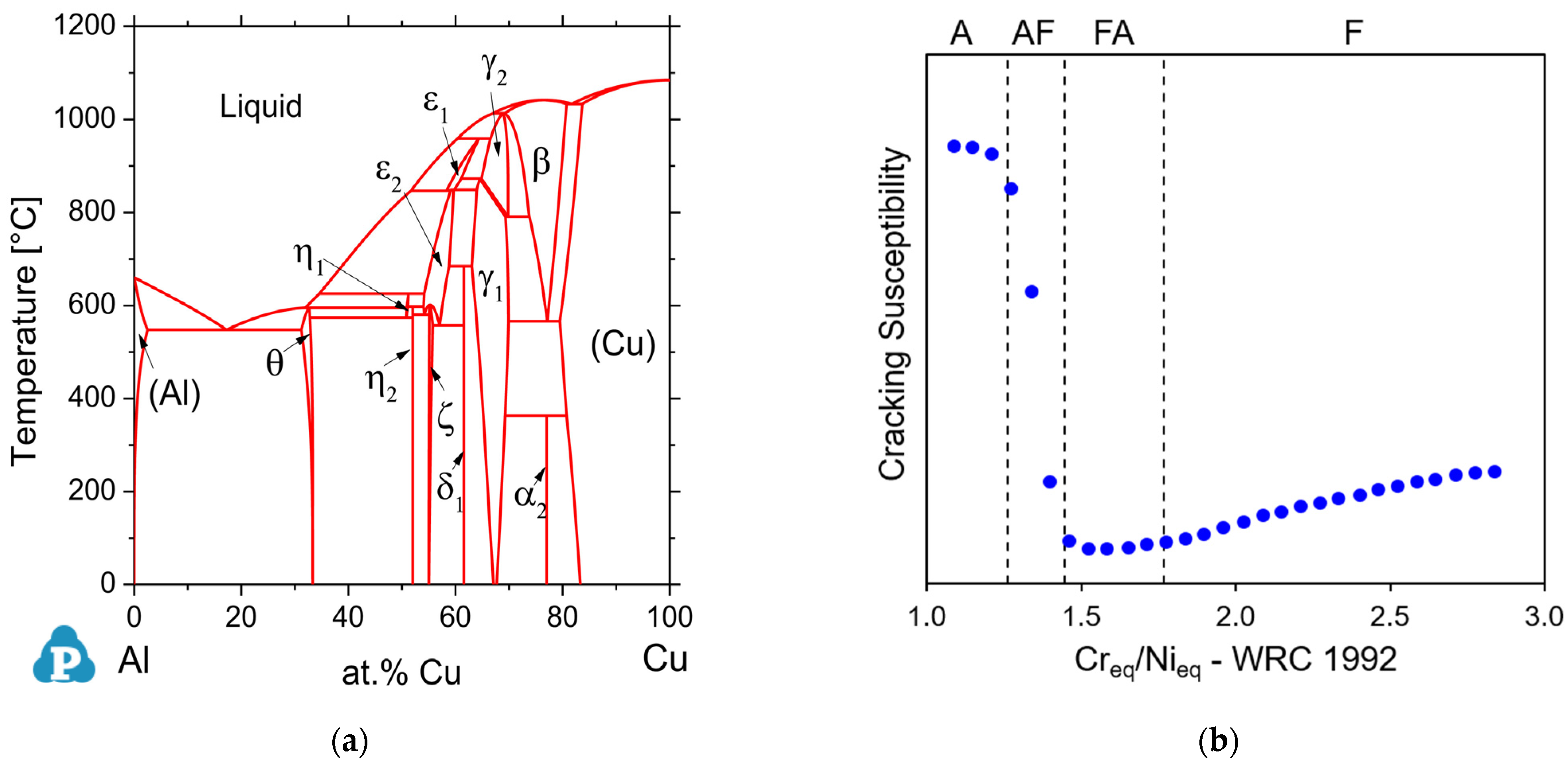
2.2. Library of Compositions and Properties
3. Optimal Design
3.1. Numerical Model
3.2. Problem Formulation
3.3. Numerical Results
3.4. Analytical Approach
4. Additive Manufacturing
5. Image-Based Characterization
6. Digital Data Processing Workflow
7. Discussion
8. Conclusions and Future Trends
Author Contributions
Funding
Institutional Review Board Statement
Informed Consent Statement
Data Availability Statement
Acknowledgments
Conflicts of Interest
Abbreviations
| AM | Additive Manufacturing |
| DIC | Digital Image Correlation |
| DfAM | Design for Additive Manufacturing |
| FEM | Finite Element Method |
| FE | Finite Element |
| FGAM | Functionally Graded Additive Manufacturing |
| FGM | Functionally Graded Material |
| FGMTO | Functionally Graded Material Topology Optimization |
| GMAW | Gas Metal Arc Welding |
| GTAW | Gas Tungsten Arc Welding |
| HS | Hashin–Shtrikman |
| MMA | Method of Moving Asymptotes |
| NA | Neutral Axis |
| NS | Neutral Surface |
| RAMP | Rational Approximation of Material Properties |
| SIMP | Solid Isotropic Material with Penalization |
| TO | Topology Optimization |
| WAAM | Wire-Arc Additive Manufacturing |
References
- Koizumi, M. FGM Activities in Japan. Compos. Part B Eng. 1997, 28, 1–4. [Google Scholar] [CrossRef]
- Vermaak, N.; Michailidis, G.; Parry, G.; Estevez, R.; Allaire, G.; Bréchet, Y. Material Interface Effects on the Topology Optimizationof Multi-Phase Structures Using a Level Set Method. Struct. Multidiscip. Optim. 2014, 50, 623–644. [Google Scholar] [CrossRef]
- Kang, Z.; Wu, C.; Luo, Y.; Li, M. Robust Topology Optimization of Multi-Material Structures Considering Uncertain Graded Interface. Compos. Struct. 2019, 208, 395–406. [Google Scholar] [CrossRef]
- Bharti, I.; Gupta, N.; Gupta, K.M. Novel Applications of Functionally Graded Nano, Optoelectronic and Thermoelectric Materials. Int. J. Mater. Mech. Manuf. 2013, 1, 221–224. [Google Scholar] [CrossRef]
- Naebe, M.; Shirvanimoghaddam, K. Functionally Graded Materials: A Review of Fabrication and Properties. Appl. Mater. Today 2016, 5, 223–245. [Google Scholar] [CrossRef]
- Zhao, P.; Wang, S.; Guo, S.; Chen, Y.; Ling, Y.; Li, J. Bonding W and W–Cu Composite with an Amorphous W–Fe Coated Copper Foil through Hot Pressing Method. Mater. Des. 2012, 42, 21–24. [Google Scholar] [CrossRef]
- Kumar, S.; Murthy Reddy, K.V.V.S.; Kumar, A.; Rohini Devi, G. Development and Characterization of Polymer–Ceramic Continuous Fiber Reinforced Functionally Graded Composites for Aerospace Application. Aerosp. Sci. Technol. 2013, 26, 185–191. [Google Scholar] [CrossRef]
- Udupa, G.; Shrikantha, R.S.; Gangadharan, K.V. Future Applications of Carbon Nanotube Reinforced Functionally Graded Composite Materials. In Proceedings of the IEEE International Conference on Advances in Engineering, Science and Management (ICAESM-2012), Nagapattinam, India, 30–31 March 2012; pp. 399–400. [Google Scholar]
- Ram, S.C.; Chattopadhyay, K.; Chakrabarty, I. High Temperature Tensile Properties of Centrifugally Cast In-Situ Al-Mg2Si Functionally Graded Composites for Automotive Cylinder Block Liners. J. Alloys Compd. 2017, 724, 84–97. [Google Scholar] [CrossRef]
- Miao, X.; Sun, D. Graded/Gradient Porous Biomaterials. Materials 2009, 3, 26–47. [Google Scholar] [CrossRef]
- Abedi, G.; Sotoudeh, A.; Soleymani, M.; Shafiee, A.; Mortazavi, P.; Aflatoonian, M.R. A Collagen–Poly(Vinyl Alcohol) Nanofiber Scaffold for Cartilage Repair. J. Biomater. Sci. Polym. Ed. 2011, 22, 2445–2455. [Google Scholar] [CrossRef]
- Chen, W.W.; Rajendran, A.M.; Song, B.; Nie, X. Dynamic Fracture of Ceramics in Armor Applications. J. Am. Ceram. Soc. 2007, 90, 1005–1018. [Google Scholar] [CrossRef]
- Huang, C.-Y.; Chen, Y.-L. Design and Impact Resistant Analysis of Functionally Graded Al2O3–ZrO2 Ceramic Composite. Mater. Des. 2016, 91, 294–305. [Google Scholar] [CrossRef]
- Liu, Z.; Meyers, M.A.; Zhang, Z.; Ritchie, R.O. Functional Gradients and Heterogeneities in Biological Materials: Design Principles, Functions, and Bioinspired Applications. Prog. Mater. Sci. 2017, 88, 467–498. [Google Scholar] [CrossRef]
- Zhang, C.; Chen, F.; Huang, Z.; Jia, M.; Chen, G.; Ye, Y.; Lin, Y.; Liu, W.; Chen, B.; Shen, Q.; et al. Additive Manufacturing of Functionally Graded Materials: A Review. Mater. Sci. Eng. A 2019, 764, 138209. [Google Scholar] [CrossRef]
- Mahamood, R.M.; Akinlabi, E.T. Functionally Graded Materials; Topics in Mining, Metallurgy and Materials Engineering; Springer International Publishing: Cham, Switzerland, 2017; ISBN 978-3-319-53755-9. [Google Scholar]
- Shojaeefard, M.H.; Saeidi Googarchin, H.; Mahinzare, M.; Ghadiri, M. Free Vibration and Critical Angular Velocity of a Rotating Variable Thickness Two-Directional FG Circular Microplate. Microsyst. Technol. 2018, 24, 1525–1543. [Google Scholar] [CrossRef]
- Mahinzare, M.; Barooti, M.M.; Ghadiri, M. Vibrational Investigation of the Spinning Bi-Dimensional Functionally Graded (2-FGM) Micro Plate Subjected to Thermal Load in Thermal Environment. Microsyst. Technol. 2018, 24, 1695–1711. [Google Scholar] [CrossRef]
- Nayak, P.; Armani, A. Optimal Design of Functionally Graded Parts. Metals 2022, 12, 1335. [Google Scholar] [CrossRef]
- Bendsøe, M.P.; Sigmund, O. Topology Optimization; Springer: Berlin/Heidelberg, Germany, 2004; ISBN 978-3-642-07698-5. [Google Scholar]
- Li, Y.; Feng, Z.; Hao, L.; Huang, L.; Xin, C.; Wang, Y.; Bilotti, E.; Essa, K.; Zhang, H.; Li, Z.; et al. A Review on Functionally Graded Materials and Structures via Additive Manufacturing: From Multi-Scale Design to Versatile Functional Properties. Adv. Mater. Technol. 2020, 5, 1900981. [Google Scholar] [CrossRef]
- Opgenoord, M.M.J.; Willcox, K.E. Design for Additive Manufacturing: Cellular Structures in Early-Stage Aerospace Design. Struct. Multidiscip. Optim. 2019, 60, 411–428. [Google Scholar] [CrossRef]
- Bayat, M.; Zinovieva, O.; Ferrari, F.; Ayas, C.; Langelaar, M.; Spangenberg, J.; Salajeghe, R.; Poulios, K.; Mohanty, S.; Sigmund, O.; et al. Holistic Computational Design within Additive Manufacturing through Topology Optimization Combined with Multiphysics Multi-Scale Materials and Process Modelling. Prog. Mater. Sci. 2023, 138, 101129. [Google Scholar] [CrossRef]
- Ibhadode, O.; Zhang, Z.; Sixt, J.; Nsiempba, K.M.; Orakwe, J.; Martinez-Marchese, A.; Ero, O.; Shahabad, S.I.; Bonakdar, A.; Toyserkani, E. Topology Optimization for Metal Additive Manufacturing: Current Trends, Challenges, and Future Outlook. Virtual Phys. Prototyp. 2023, 18, e2181192. [Google Scholar] [CrossRef]
- Ituarte, I.F.; Boddeti, N.; Hassani, V.; Dunn, M.L.; Rosen, D.W. Design and Additive Manufacture of Functionally Graded Structures Based on Digital Materials. Addit. Manuf. 2019, 30, 100839. [Google Scholar] [CrossRef]
- Reichardt, A.; Shapiro, A.A.; Otis, R.; Dillon, R.P.; Borgonia, J.P.; McEnerney, B.W.; Hosemann, P.; Beese, A.M. Advances in Additive Manufacturing of Metal-Based Functionally Graded Materials. Int. Mater. Rev. 2021, 66, 1–29. [Google Scholar] [CrossRef]
- Paulino, G.H.; Silva, E.C.N. Design of Functionally Graded Structures Using Topology Optimization. Mater. Sci. Forum. 2005, 492–493, 435–440. [Google Scholar] [CrossRef]
- Kim, J.-H.; Paulino, G.H. Isoparametric Graded Finite Elements for Nonhomogeneous Isotropic and Orthotropic Materials. J. Appl. Mech. 2002, 69, 502–514. [Google Scholar] [CrossRef]
- Xia, Q.; Wang, M.Y. Simultaneous Optimization of the Material Properties and the Topology of Functionally Graded Structures. Comput.-Aided Des. 2008, 40, 660–675. [Google Scholar] [CrossRef]
- Paulino, G.H.; Silva, E.C.N.; Le, C.H. Optimal Design of Periodic Functionally Graded Composites with Prescribed Properties. Struct. Multidiscip. Optim. 2009, 38, 469–489. [Google Scholar] [CrossRef]
- Almeida, S.R.M.; Paulino, G.H.; Silva, E.C.N. Layout and Material Gradation in Topology Optimization of Functionally Graded Structures: A Global–Local Approach. Struct. Multidiscip. Optim. 2010, 42, 855–868. [Google Scholar] [CrossRef]
- Maleki Jebeli, S.; Shariat Panahi, M. An Evolutionary Approach for Simultaneous Optimization of Material Property Distribution and Topology of FG Structures. Eng. Comput. 2015, 32, 234–257. [Google Scholar] [CrossRef]
- Dunning, P.D.; Brampton, C.J.; Kim, H.A. Simultaneous Optimisation of Structural Topology and Material Grading Using Level Set Method. Mater. Sci. Technol. 2015, 31, 884–894. [Google Scholar] [CrossRef]
- Taheri, A.H.; Suresh, K. An Isogeometric Approach to Topology Optimization of Multi-Material and Functionally Graded Structures. Int. J. Numer. Methods Eng. 2017, 109, 668–696. [Google Scholar] [CrossRef]
- Conlan-Smith, C.; Bhattacharyya, A.; James, K.A. Optimal Design of Compliant Mechanisms Using Functionally Graded Materials. Struct. Multidiscip. Optim. 2018, 57, 197–212. [Google Scholar] [CrossRef]
- Stump, F.V.; Silva, E.C.N.; Paulino, G.H. Optimization of Material Distribution in Functionally Graded Structures with Stress Constraints. Commun. Numer. Methods Eng. 2007, 23, 535–551. [Google Scholar] [CrossRef]
- Conlan-Smith, C.; James, K.A. A Stress-Based Topology Optimization Method for Heterogeneous Structures. Struct. Multidiscip. Optim. 2019, 60, 167–183. [Google Scholar] [CrossRef]
- Tamijani, A.Y. Stress and Stiffness-Based Topology Optimization of Two-Material Thermal Structures. Comput. Struct. 2021, 256, 106641. [Google Scholar] [CrossRef]
- Conde, F.M.; Coelho, P.G.; Guedes, J.M. Multi-Material and Strength-Oriented Microstructural Topology Optimization Applied to Discrete Phase and Functionally Graded Materials. Struct. Multidiscip. Optim. 2022, 65, 127. [Google Scholar] [CrossRef]
- Silva, R.F.; Coelho, P.G.; Conde, F.M.; Santos, B.R.; Oliveira, J.P. Minimizing the Maximum von Mises Stress of Elastic Continuum Structures Using Topology Optimization and Additively Manufactured Functionally Graded Materials. Comput. Struct. 2024, 301, 107469. [Google Scholar] [CrossRef]
- Meng, L.; Zhang, W.; Quan, D.; Shi, G.; Tang, L.; Hou, Y.; Breitkopf, P.; Zhu, J.; Gao, T. From Topology Optimization Design to Additive Manufacturing: Today’s Success and Tomorrow’s Roadmap. Arch. Comput. Methods Eng. 2020, 27, 805–830. [Google Scholar] [CrossRef]
- Sasikumar, R.; Kannan, A.R.; Kumar, S.M.; Pramod, R.; Kumar, N.P.; Shanmugam, N.S.; Palguna, Y.; Sivankalai, S. Wire Arc Additive Manufacturing of Functionally Graded Material with SS 316L and IN625: Microstructural and Mechanical Perspectives. CIRP J. Manuf. Sci. Technol. 2022, 38, 230–242. [Google Scholar] [CrossRef]
- Khan, A.U.; Sadhya, S.; Bharath Kumar, A.; Chatterjee, S.; Madhukar, Y.K. Investigation on Dual Wire TIG Arc Additive Manufacturing of IN625 and SS316L FGM for Continuous Gradient and Sandwich Structures. Thin-Walled Struct. 2024, 200, 111881. [Google Scholar] [CrossRef]
- Li, T.; Wang, Z.; Yang, Z.; Shu, X.; Xu, J.; Wang, Y.; Hu, S. Fabrication and Characterization of Stainless Steel 308 L/Inconel 625 Functionally Graded Material with Continuous Change in Composition by Dual-Wire Arc Additive Manufacturing. J. Alloys Compd. 2022, 915, 165398. [Google Scholar] [CrossRef]
- Xin, D.; Yao, X.; Zhang, J.; Chen, X. Fabrication of Functionally Graded Material of 304L Stainless Steel and Inconel625 by Twin-Wire Plasma Arc Additive Manufacturing. J. Mater. Res. Technol. 2023, 23, 4135–4147. [Google Scholar] [CrossRef]
- Jeong, T.-W.; Cho, Y.T.; Lee, C.-M.; Kim, D.-H. Effects of Ultrasonic Treatment on Mechanical Properties and Microstructure of Stainless Steel 308L and Inconel 718 Functionally Graded Materials Fabricated via Double-Wire Arc Additive Manufacturing. Mater. Sci. Eng. A 2024, 896, 146298. [Google Scholar] [CrossRef]
- Shen, C.; Pan, Z.; Cuiuri, D.; Roberts, J.; Li, H. Fabrication of Fe-FeAl Functionally Graded Material Using the Wire-Arc Additive Manufacturing Process. Metall. Mater. Trans. B 2016, 47, 763–772. [Google Scholar] [CrossRef]
- Tomar, B.; Shiva, S. Microstructural and Mechanical Properties Examination of SS316L-Cu Functionally Graded Material Fabricated by Wire Arc Additive Manufacturing. CIRP J. Manuf. Sci. Technol. 2024, 50, 26–39. [Google Scholar] [CrossRef]
- Rodrigues, T.A.; Bairrão, N.; Farias, F.W.C.; Shamsolhodaei, A.; Shen, J.; Zhou, N.; Maawad, E.; Schell, N.; Santos, T.G.; Oliveira, J.P. Steel-Copper Functionally Graded Material Produced by Twin-Wire and Arc Additive Manufacturing (T-WAAM). Mater. Des. 2022, 213, 110270. [Google Scholar] [CrossRef]
- Rajesh Kannan, A.; Mohan Kumar, S.; Pravin Kumar, N.; Siva Shanmugam, N.; Vishnu, A.S.; Palguna, Y. Process-Microstructural Features for Tailoring Fatigue Strength of Wire Arc Additive Manufactured Functionally Graded Material of SS904L and Hastelloy C-276. Mater. Lett. 2020, 274, 127968. [Google Scholar] [CrossRef]
- Kou, S. Welding Metallurgy, 2nd ed.; Wiley-Interscience: Hoboken, NJ, USA, 2003; ISBN 978-0-471-43491-7. [Google Scholar]
- Duarte, V.R.; Rodrigues, T.A.; Schell, N.; Miranda, R.M.; Oliveira, J.P.; Santos, T.G. In-Situ Hot Forging Directed Energy Deposition-Arc of CuAl8 Alloy. Addit. Manuf. 2022, 55, 102847. [Google Scholar] [CrossRef]
- Kuryntsev, S. A Review: Laser Welding of Dissimilar Materials (Al/Fe, Al/Ti, Al/Cu)—Methods and Techniques, Microstructure and Properties. Materials 2021, 15, 122. [Google Scholar] [CrossRef]
- Chen, S.; Li, L.; Chen, Y.; Huang, J. Joining Mechanism of Ti/Al Dissimilar Alloys during Laser Welding-Brazing Process. J. Alloys Compd. 2011, 509, 891–898. [Google Scholar] [CrossRef]
- Baqer, Y.M.; Ramesh, S.; Yusof, F.; Manladan, S.M. Challenges and Advances in Laser Welding of Dissimilar Light Alloys: Al/Mg, Al/Ti, and Mg/Ti Alloys. Int. J. Adv. Manuf. Technol. 2018, 95, 4353–4369. [Google Scholar] [CrossRef]
- Chen, S.; Zhang, M.; Huang, J.; Cui, C.; Zhang, H.; Zhao, X. Microstructures and Mechanical Property of Laser Butt Welding of Titanium Alloy to Stainless Steel. Mater. Des. 2014, 53, 504–511. [Google Scholar] [CrossRef]
- Cipriano Farias, F.W.; Payão Filho, J.D.C.; Barreto De Azevedo, L.M. Microstructural and Mechanical Characterization of the Transition Zone of 9%Ni Steel Cladded with Ni-Based Superalloy 625 by GTAW-HW. Metals 2018, 8, 1007. [Google Scholar] [CrossRef]
- Farias, F.W.C.; Payão Filho, J.D.C.; Da Silva Júnior, D.A.; De Moura, R.N.; Rios, M.C.G. Microstructural Characterization of Ni-Based Superalloy 625 Clad Welded on a 9% Ni Steel Pipe by Plasma Powder Transferred Arc. Surf. Coat. Technol. 2019, 374, 1024–1037. [Google Scholar] [CrossRef]
- Liang, S.-M.; Schmid-Fetzer, R. Thermodynamic Assessment of the Al–Cu–Zn System, Part II: Al–Cu Binary System. Calphad 2015, 51, 252–260. [Google Scholar] [CrossRef]
- Farias, F.W.C.; Duarte, V.R.; Felice, I.O.; Filho, J.d.C.P.; Schell, N.; Maawad, E.; Li, J.Y.; Zhang, Y.; Santos, T.G.; Oliveira, J.P. In Situ Interlayer Hot Forging Arc Plasma Directed Energy Deposition of Inconel® 625: Microstructure Evolution during Heat Treatments. J. Alloys Compd. 2023, 952, 170059. [Google Scholar] [CrossRef]
- Cipriano Farias, F.W.; Rebelo Duarte, V.; Da Cruz Payão Filho, J.; Schell, N.; Maawad, E.; Bordas-Czaplicki, M.; Alves Da Fonseca, F.M.; Cormier, J.; Gomes Dos Santos, T.J.; Oliveira, J.P. Arc-Based Directed Energy Deposited Inconel 718: Role of Heat Treatments on High-Temperature Tensile Behavior. Mater. Res. Lett. 2024, 12, 97–107. [Google Scholar] [CrossRef]
- Luo, Y.W.; Ma, T.; Shao, W.W.; Zhang, G.P.; Zhang, B. Effects of Heat Treatment on Microstructures and Mechanical Properties of GH4169/K418 Functionally Graded Material Fabricated by Laser Melting Deposition. Mater. Sci. Eng. A 2021, 821, 141601. [Google Scholar] [CrossRef]
- Song, H.; Shin, H.; Shin, Y. Heat-Treatment of Clad Steel Plate for Application of Hull Structure. Ocean Eng. 2016, 122, 278–287. [Google Scholar] [CrossRef]
- Arana, M.; Ukar, E.; Rodriguez, I.; Aguilar, D.; Álvarez, P. Influence of Deposition Strategy and Heat Treatment on Mechanical Properties and Microstructure of 2319 Aluminium WAAM Components. Mater. Des. 2022, 221, 110974. [Google Scholar] [CrossRef]
- Hashin, Z.; Shtrikman, S. A Variational Approach to the Theory of the Elastic Behaviour of Multiphase Materials. J. Mech. Phys. Solids 1963, 11, 127–140. [Google Scholar] [CrossRef]
- Stolpe, M.; Svanberg, K. An Alternative Interpolation Scheme for Minimum Compliance Topology Optimization. Struct. Multidiscip. Optim. 2001, 22, 116–124. [Google Scholar] [CrossRef]
- Strozzi, M.; Giacomobono, R.; Rubini, R.; Cocconcelli, M. Preliminary orthotropic elastic model for the study of natural frequencies and mode shapes of a 3D printed Onyx thin circular cylindrical shell. Int. J. Mech. Control 2020, 21, 51–62. [Google Scholar]
- Zou, R.; Xia, Y.; Liu, S.; Hu, P.; Hou, W.; Hu, Q.; Shan, C. Isotropic and anisotropic elasticity and yielding of 3D printed material. Compos. Part B 2016, 99, 506–513. [Google Scholar] [CrossRef]
- Bruns, T.E.; Tortorelli, D.A. Topology Optimization of Non-Linear Elastic Structures and Compliant Mechanisms. Comput. Methods Appl. Mech. Eng. 2001, 190, 3443–3459. [Google Scholar] [CrossRef]
- Bendsøe, M.P.; Sigmund, O. Material Interpolation Schemes in Topology Optimization. Arch. Appl. Mech. Ing. Arch. 1999, 69, 635–654. [Google Scholar] [CrossRef]
- Lian, H.; Christiansen, A.N.; Tortorelli, D.A.; Sigmund, O.; Aage, N. Combined Shape and Topology Optimization for Minimization of Maximal von Mises Stress. Struct. Multidiscip. Optim. 2017, 55, 1541–1557. [Google Scholar] [CrossRef]
- Verbart, A.; Langelaar, M.; Keulen, F.V. A Unified Aggregation and Relaxation Approach for Stress-Constrained Topology Optimization. Struct. Multidiscip. Optim. 2017, 55, 663–679. [Google Scholar] [CrossRef]
- Taylor, J.E.; Bendsøe, M.P. An Interpretation for Min-Max Structural Design Problems Including a Method for Relaxing Constraints. Int. J. Solids Struct. 1984, 20, 301–314. [Google Scholar] [CrossRef]
- Coelho, P.G.; Barroca, B.C.; Conde, F.M.; Guedes, J.M. Minimization of Maximal von Mises Stress in Porous Composite Microstructures Using Shape and Topology Optimization. Struct. Multidiscip. Optim. 2021, 64, 1781–1799. [Google Scholar] [CrossRef]
- Svanberg, K. The Method of Moving Asymptotes—A New Method for Structural Optimization. Int. J. Numer. Methods Eng. 1987, 24, 359–373. [Google Scholar] [CrossRef]
- Sigmund, O.; Maute, K. Topology Optimization Approaches: A Comparative Review. Struct. Multidiscip. Optim. 2013, 48, 1031–1055. [Google Scholar] [CrossRef]
- Althoey, F.; Ali, E. A Simplified Stress Analysis of Functionally Graded Beams and Influence of Material Function on Deflection. Appl. Sci. 2021, 11, 11747. [Google Scholar] [CrossRef]
- Nikbakht, S.; Kamarian, S.; Shakeri, M. A Review on Optimization of Composite Structures Part II: Functionally Graded Materials. Compos. Struct. 2019, 214, 83–102. [Google Scholar] [CrossRef]
- Kieback, B.; Neubrand, A.; Riedel, H. Processing Techniques for Functionally Graded Materials. Mater. Sci. Eng. A 2003, 362, 81–106. [Google Scholar] [CrossRef]
- Shen, C.; Pan, Z.; Cuiuri, D.; Dong, B.; Li, H. In-Depth Study of the Mechanical Properties for Fe3Al Based Iron Aluminide Fabricated Using the Wire-Arc Additive Manufacturing Process. Mater. Sci. Eng. A 2016, 669, 118–126. [Google Scholar] [CrossRef]
- Martina, F.; Mehnen, J.; Williams, S.W.; Colegrove, P.; Wang, F. Investigation of the Benefits of Plasma Deposition for the Additive Layer Manufacture of Ti–6Al–4V. J. Mater. Process. Technol. 2012, 212, 1377–1386. [Google Scholar] [CrossRef]
- Zhang, G.; Shi, Y.; Zhu, M.; Fan, D. Effect of Electric Parameters on Weld Pool Dynamic Behavior in GTAW. J. Manuf. Process. 2022, 77, 369–379. [Google Scholar] [CrossRef]
- Wu, B.; Pan, Z.; Ding, D.; Cuiuri, D.; Li, H.; Xu, J.; Norrish, J. A Review of the Wire Arc Additive Manufacturing of Metals: Properties, Defects and Quality Improvement. J. Manuf. Process. 2018, 35, 127–139. [Google Scholar] [CrossRef]
- Szost, B.A.; Terzi, S.; Martina, F.; Boisselier, D.; Prytuliak, A.; Pirling, T.; Hofmann, M.; Jarvis, D.J. A Comparative Study of Additive Manufacturing Techniques: Residual Stress and Microstructural Analysis of CLAD and WAAM Printed Ti–6Al–4V Components. Mater. Des. 2016, 89, 559–567. [Google Scholar] [CrossRef]
- Cunha, F.G.; Santos, T.G.; Xavier, J. In Situ Monitoring of Additive Manufacturing Using Digital Image Correlation: A Review. Materials 2021, 14, 1511. [Google Scholar] [CrossRef] [PubMed]
- Henriques, J.; Xavier, J.; Andrade-Campos, A. Identification of Orthotropic Elastic Properties of Wood by a Synthetic Image Approach Based on Digital Image Correlation. Materials 2022, 15, 625. [Google Scholar] [CrossRef] [PubMed]
- Lava, P.; Jones, E.M.C.; Wittevrongel, L.; Pierron, F. Validation of Finite-element Models Using Full-field Experimental Data: Levelling Finite-element Analysis Data through a Digital Image Correlation Engine. Strain 2020, 56, e12350. [Google Scholar] [CrossRef]
- Pierron, F. Material Testing 2.0: A Brief Review. Strain 2023, 59, e12434. [Google Scholar] [CrossRef]
- Alkunte, S.; Fidan, I.; Naikwadi, V.; Gudavasov, S.; Ali, M.A.; Mahmudov, M.; Hasanov, S.; Cheepu, M. Advancements and Challenges in Additively Manufactured Functionally Graded Materials: A Comprehensive Review. J. Manuf. Mater. Process. 2024, 8, 23. [Google Scholar] [CrossRef]
- Rosen, D.W. A review of synthesis methods for additive manufacturing. Virtual Phys. Prototyp. 2016, 11, 305–317. [Google Scholar] [CrossRef]
- Liu, J.; Gaynor, A.T.; Chen, S.; Kang, Z.; Suresh, K.; Takezawa, A.; Li, L.; Kato, J.; Tang, J.; Wang, C.C.L.; et al. Current and future trends in topology optimization for additive manufacturing. Struct. Multidisc. Optim. 2018, 57, 2457–2483. [Google Scholar] [CrossRef]
- Pereira, J.L.; Xavier, J.; Ghiassi, B.; Lousada, J.; Morais, J. On the identification of earlywood and latewood radial elastic modulus of Pinus pinaster by digital image correlation: A parametric analysis. J. Strain Anal. Eng. Des. 2018, 53, 566–574. [Google Scholar] [CrossRef]
- Ghanavati, R.; Naffakh-Moosavy, H. Additive manufacturing of functionally graded metallic materials: A review of experimental and numerical studies. J. Mater. Res. Technol. 2021, 13, 1628–1664. [Google Scholar] [CrossRef]
- Phanikumar, G.; Dutta, P.; Chattopadhyay, K. Continuous welding of Cu–Ni dissimilar couple using CO2 laser. Sci. Technol. Weld. Join. 2005, 10, 158–166. [Google Scholar] [CrossRef]
- Gonzaga, R.S.; Farias, F.W.C.; Payão Filho, J.C. Microstructural characterization of the transition zone between a C–Mn steel pipe and a 70%Ni-30%Cu alloy cladding welded by HW-GTAW. Int. J. Press. Vessels Pip. 2021, 192, 104433. [Google Scholar] [CrossRef]
- Zhang, C.; Liu, Y.; Lu, J.; Xu, L.; Lin, Y.; Chen, P.; Sheng, Q.; Chen, F. Additive manufacturing and mechanical properties of martensite/austenite functionally graded materials by laser engineered net shaping. J. Mater. Res. Technol. 2022, 17, 1570–1581. [Google Scholar] [CrossRef]
- Laghi, V.; Tonelli, L.; Palermo, M.; Bruggi, M.; Sola, R.; Ceschini, L.; Trombetti, T. Experimentally-validated orthotropic elastic model for Wire-and-Arc Additively Manufactured stainless steel. Addit. Manuf. 2021, 42, 101999. [Google Scholar] [CrossRef]
- Bruggi, M.; Laghi, V.; Trombetti, T. Simultaneous design of the topology and the build orientation of Wire-and-Arc Additively Manufactured structural elements. Comput. Struct. 2021, 242, 106370. [Google Scholar] [CrossRef]
- Mishra, V.; Ayas, C.; Langelaar, M.; van Keulen, F. Simultaneous topology and deposition direction optimization for Wire and Arc Additive Manufacturing. Manuf. Lett. 2022, 31, 45–51. [Google Scholar] [CrossRef]
- Farias, F.W.C.; Duarte, V.R.; Payão Filho, J.C.; Figueiredo, A.R.; Schell, N.; Maawad, E.; Li, J.Y.; Zhang, Y.; Bordas-Czaplicki, M.; Fonseca, F.M.A.; et al. High-performance Ni-based superalloy 718 fabricated via arc plasma directed energy deposition: Effect of post-deposition heat treatments on microstructure and mechanical properties. Addit. Manuf. 2024, 88, 104252. [Google Scholar] [CrossRef]
- Yang, Q.; Gao, C.-F.; Chen, W. Stress analysis of a functional graded material plate with a circular hole. Arch. Appl. Mech. 2010, 80, 895–907. [Google Scholar] [CrossRef]
- Sburlati, R. Stress concentration factor due to a functionally graded ring around a hole in an isotropic plate. Int. J. Solids Struct. 2013, 50, 3649–3658. [Google Scholar] [CrossRef]
- Sburlati, R.; Atashipour, S.R.; Atashipour, S.A. Reduction of the stress concentration in a homogeneous panel with hole by using a functionally graded layer. Compos. Part B 2014, 61, 99–109. [Google Scholar] [CrossRef]
- Goyat, V.; Verma, S.; Garg, R.K. Stress concentration reduction using different functionally graded materials layer around their hole in an infinite panel. Strength Fract. Complex. 2019, 12, 31–45. [Google Scholar] [CrossRef]
- Li, H.; Brodie, E.G.; Hutchinson, C. Predicting the chemical homogeneity in laser powder bed fusion (LPBF) of mixed powders after remelting. Addit. Manuf. 2023, 65, 103447. [Google Scholar] [CrossRef]
- Esfahani, M.R.N.; Coupland, J.; Marimuthu, S. Numerical simulation of alloy composition in dissimilar laser welding. J. Mater. Process. Technol. 2015, 224, 135–142. [Google Scholar] [CrossRef]

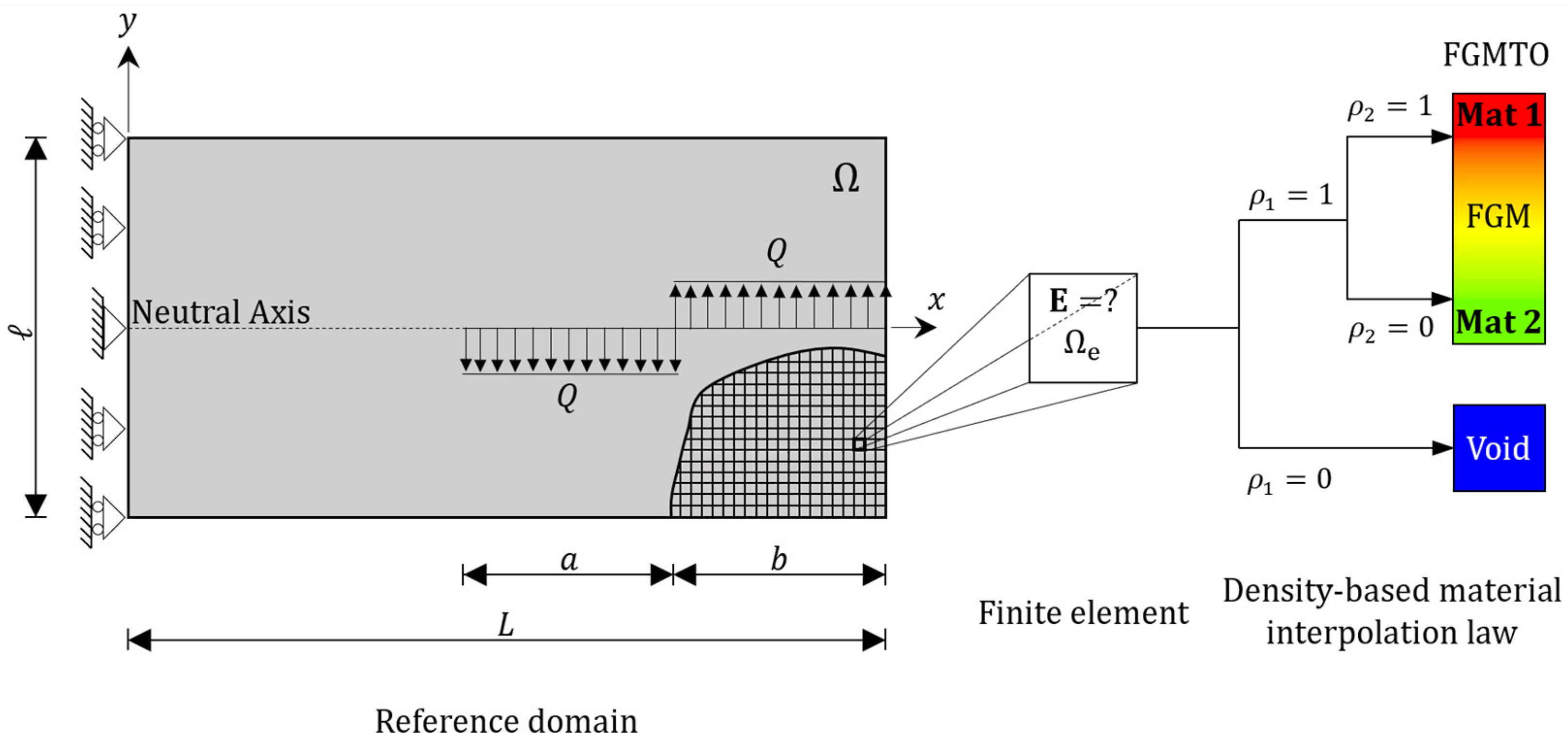
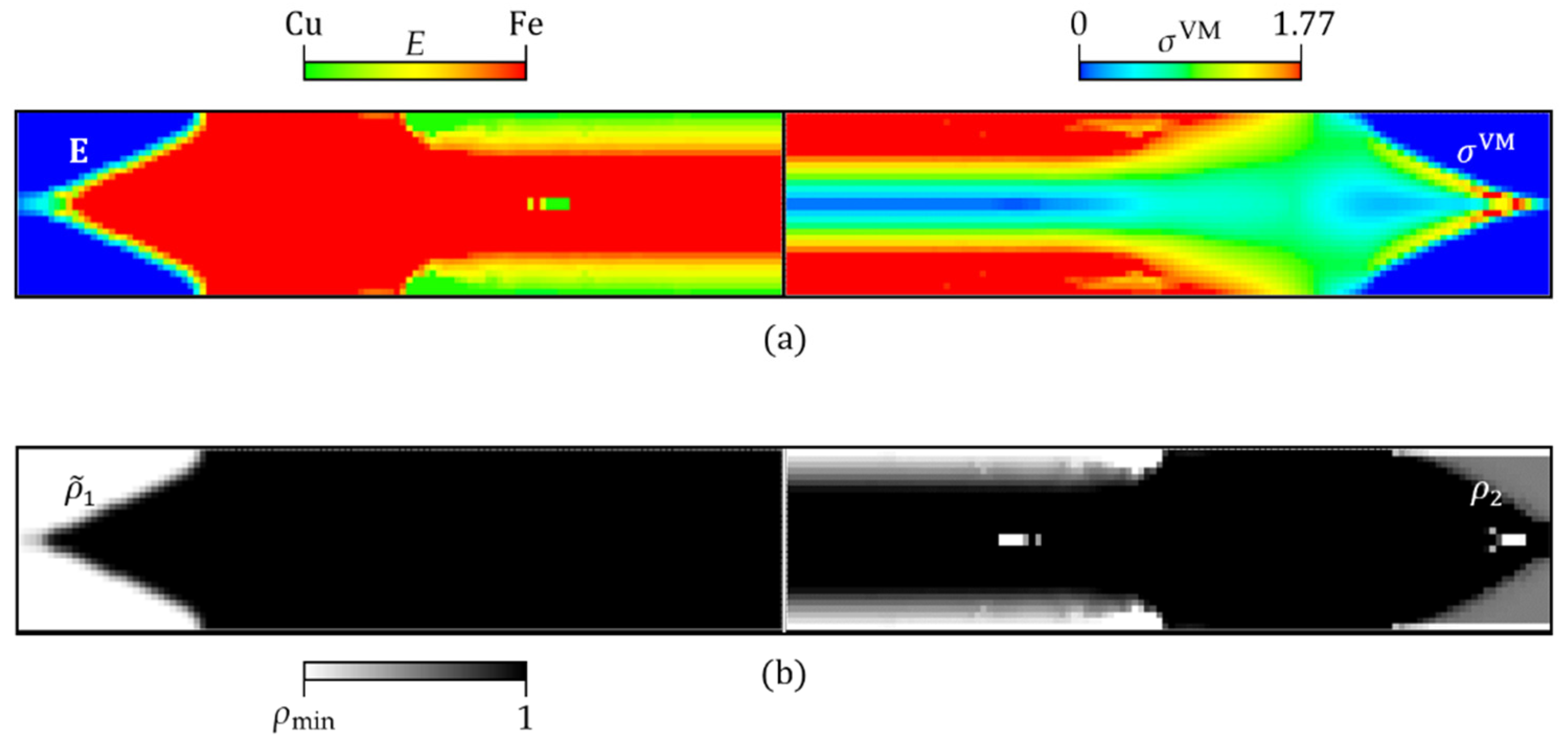

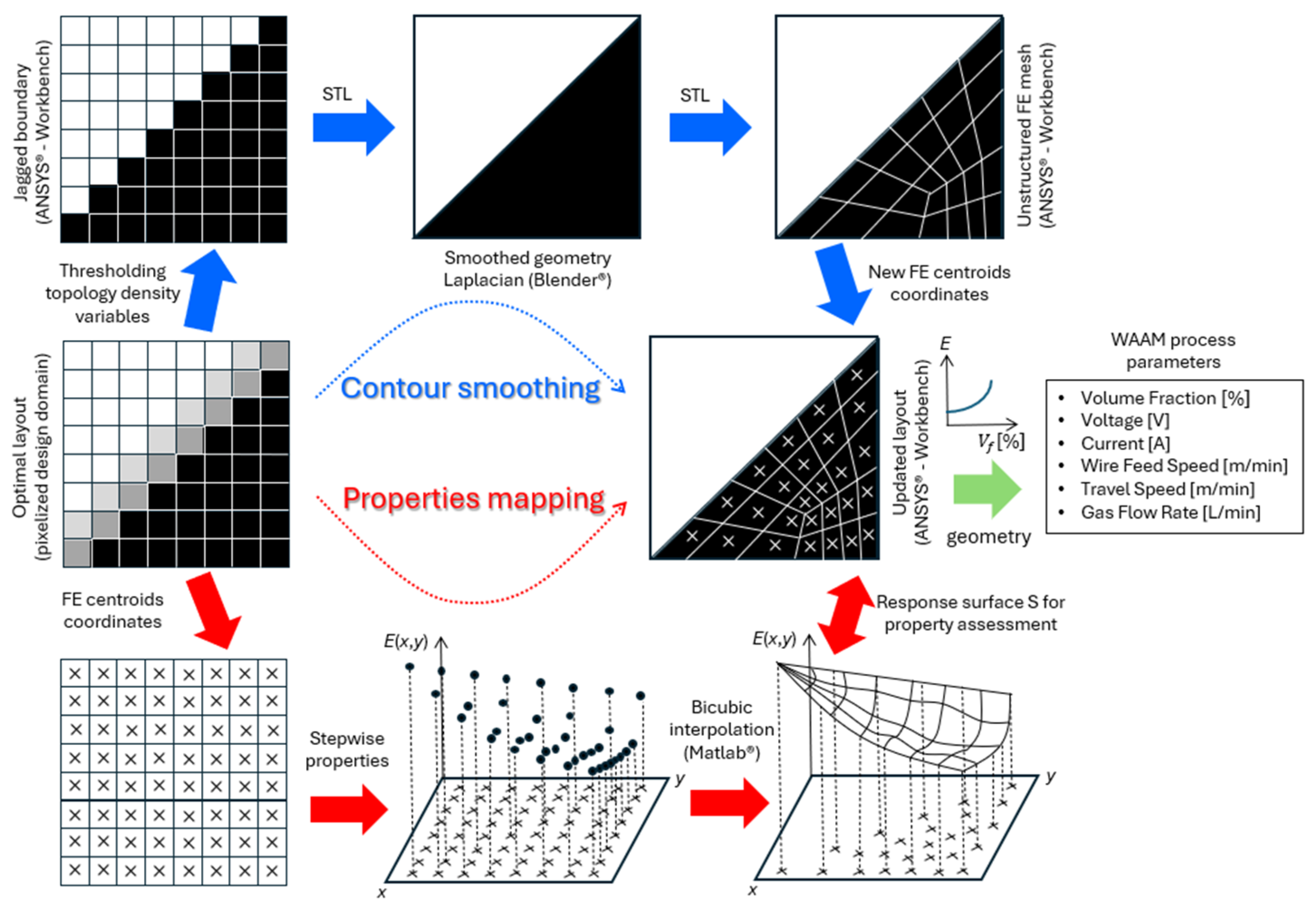

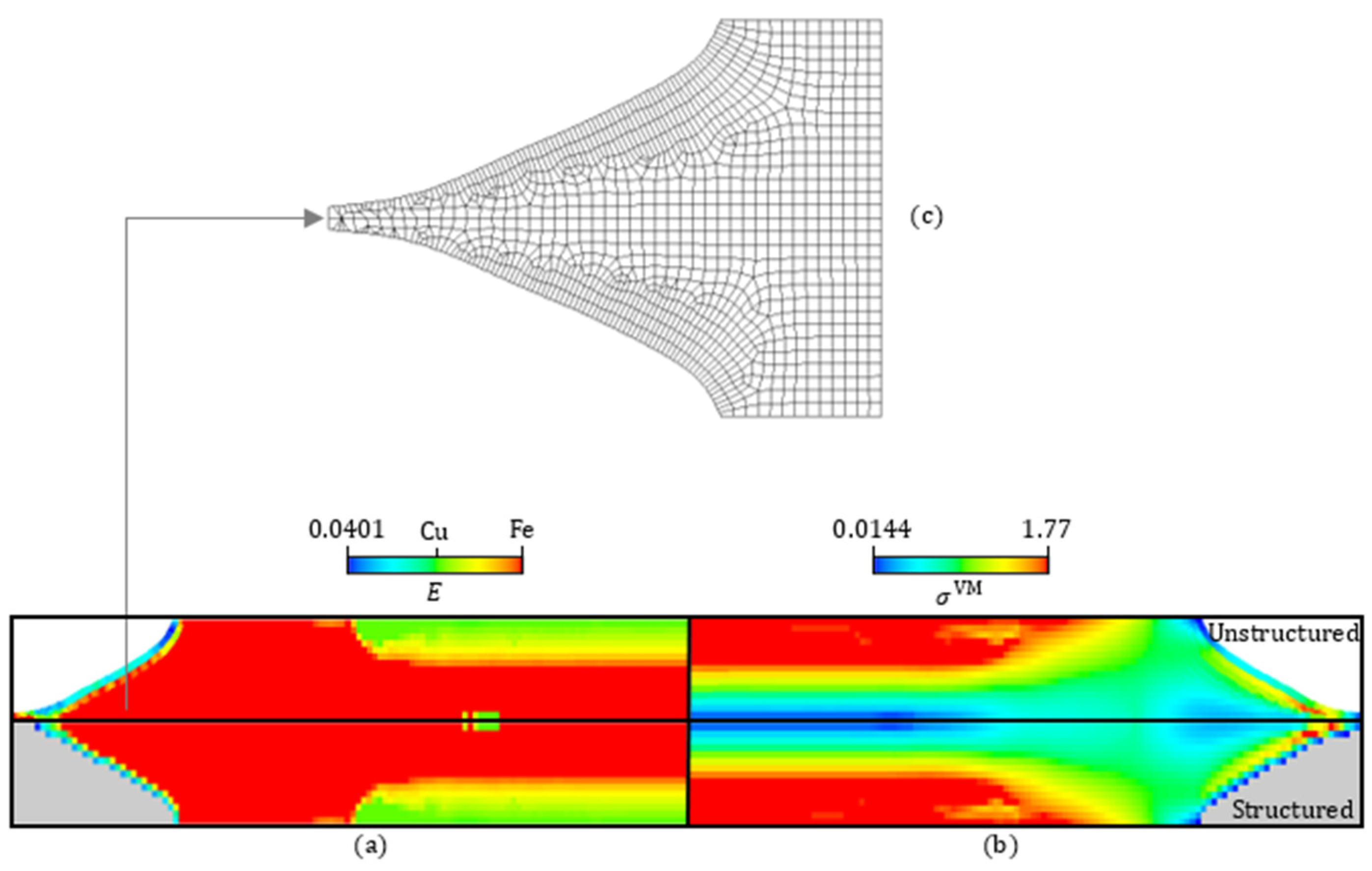

| Material | Molybdenum | Chromium | Cobalt | Nickel | Iron | Vanadium | Titanium | Copper | Niobium | Zirconium | Aluminum | Magnesium |
|---|---|---|---|---|---|---|---|---|---|---|---|---|
| Abbrev. E [GPa] | Mo 330 | Cr 248 | Co 211 | Ni 207 | Fe 200 | V 126 | Ti 116 | Cu 110 | Nb 103 | Zr 95 | Al 68 | Mg 44 |
| Mg | 0.133 | 0.177 | 0.209 | 0.213 | 0.220 | 0.351 | 0.379 | 0.400 | 0.427 | 0.466 | 0.647 | |
| Al | 0.206 | 0.274 | 0.322 | 0.329 | 0.340 | 0.542 | 0.586 | 0.618 | 0.660 | 0.720 | I | |
| Zr | 0.286 | 0.381 | 0.448 | 0.457 | 0.473 | 0.753 | 0.815 | 0.859 | 0.917 | I | – | |
| Nb | 0.312 | 0.415 | 0.488 | 0.498 | 0.515 | 0.821 | 0.888 | 0.936 | G | I/H | – | |
| Cu | 0.333 | 0.444 | 0.521 | 0.531 | 0.550 | 0.876 | 0.948 | G/H | I | H/I | H/I | |
| Ti | 0.352 | 0.468 | 0.550 | 0.560 | 0.580 | 0.924 | I | G | G | I | – | |
| V | 0.380 | 0.506 | 0.595 | 0.606 | 0.628 | G | G | G | G | I | – | |
| Fe | 0.606 | 0.806 | 0.948 | 0.966 | I | I | G/H | I | I | I | I | |
| Ni | 0.627 | 0.835 | 0.981 | G/H | I | I | G | I/H | I | I | I | |
| Co | 0.639 | 0.851 | G | G | I | I | G | I | – | I | – | |
| Cr | 0.752 | I | G | G | – | I | G | H | H | I | H | |
| Mo | G | I | G | G | – | G | – | G | – | I | – |
| Plots | |||
|---|---|---|---|
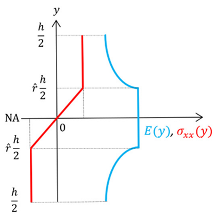 | |||
Disclaimer/Publisher’s Note: The statements, opinions and data contained in all publications are solely those of the individual author(s) and contributor(s) and not of MDPI and/or the editor(s). MDPI and/or the editor(s) disclaim responsibility for any injury to people or property resulting from any ideas, methods, instructions or products referred to in the content. |
© 2024 by the authors. Licensee MDPI, Basel, Switzerland. This article is an open access article distributed under the terms and conditions of the Creative Commons Attribution (CC BY) license (https://creativecommons.org/licenses/by/4.0/).
Share and Cite
Silva, R.F.; Coelho, P.G.; Gustavo, C.V.; Almeida, C.J.; Farias, F.W.C.; Duarte, V.R.; Xavier, J.; Esteves, M.B.; Conde, F.M.; Cunha, F.G.; et al. Functionally Graded Materials and Structures: Unified Approach by Optimal Design, Metal Additive Manufacturing, and Image-Based Characterization. Materials 2024, 17, 4545. https://doi.org/10.3390/ma17184545
Silva RF, Coelho PG, Gustavo CV, Almeida CJ, Farias FWC, Duarte VR, Xavier J, Esteves MB, Conde FM, Cunha FG, et al. Functionally Graded Materials and Structures: Unified Approach by Optimal Design, Metal Additive Manufacturing, and Image-Based Characterization. Materials. 2024; 17(18):4545. https://doi.org/10.3390/ma17184545
Chicago/Turabian StyleSilva, Rui F., Pedro G. Coelho, Carolina V. Gustavo, Cláudia J. Almeida, Francisco Werley Cipriano Farias, Valdemar R. Duarte, José Xavier, Marcos B. Esteves, Fábio M. Conde, Filipa G. Cunha, and et al. 2024. "Functionally Graded Materials and Structures: Unified Approach by Optimal Design, Metal Additive Manufacturing, and Image-Based Characterization" Materials 17, no. 18: 4545. https://doi.org/10.3390/ma17184545
APA StyleSilva, R. F., Coelho, P. G., Gustavo, C. V., Almeida, C. J., Farias, F. W. C., Duarte, V. R., Xavier, J., Esteves, M. B., Conde, F. M., Cunha, F. G., & Santos, T. G. (2024). Functionally Graded Materials and Structures: Unified Approach by Optimal Design, Metal Additive Manufacturing, and Image-Based Characterization. Materials, 17(18), 4545. https://doi.org/10.3390/ma17184545










